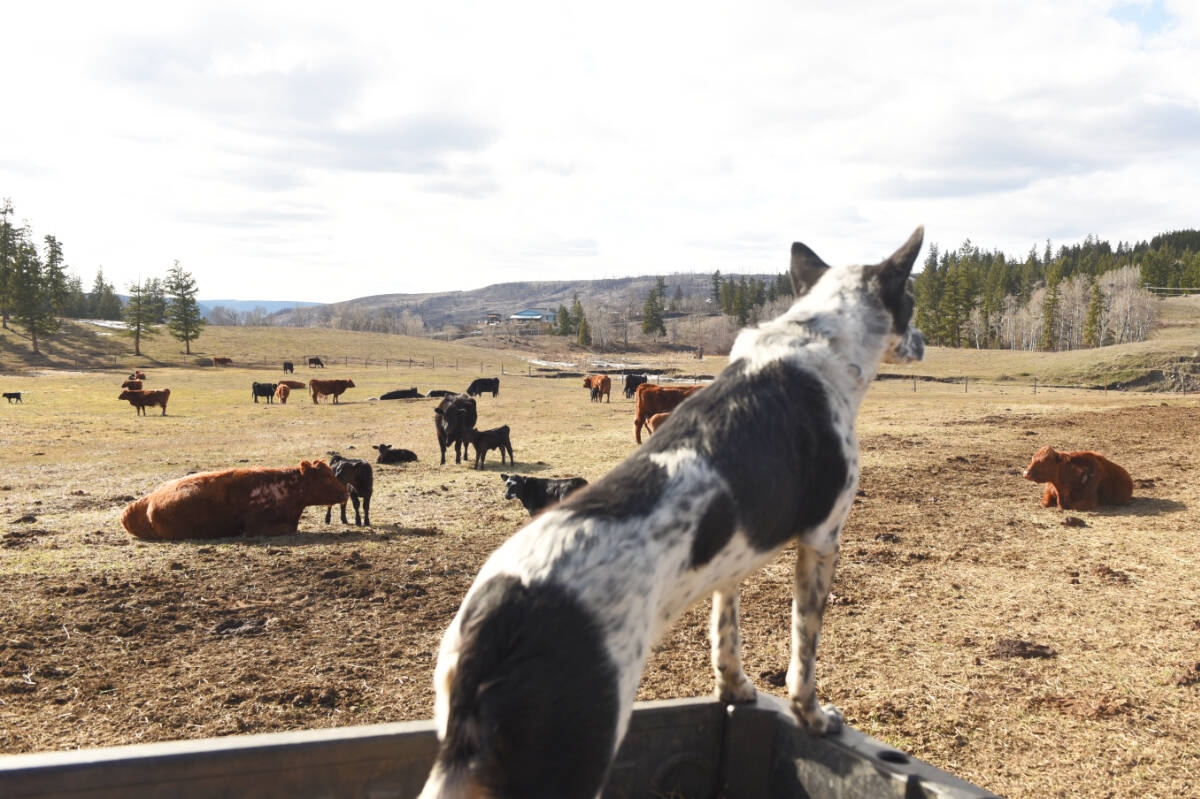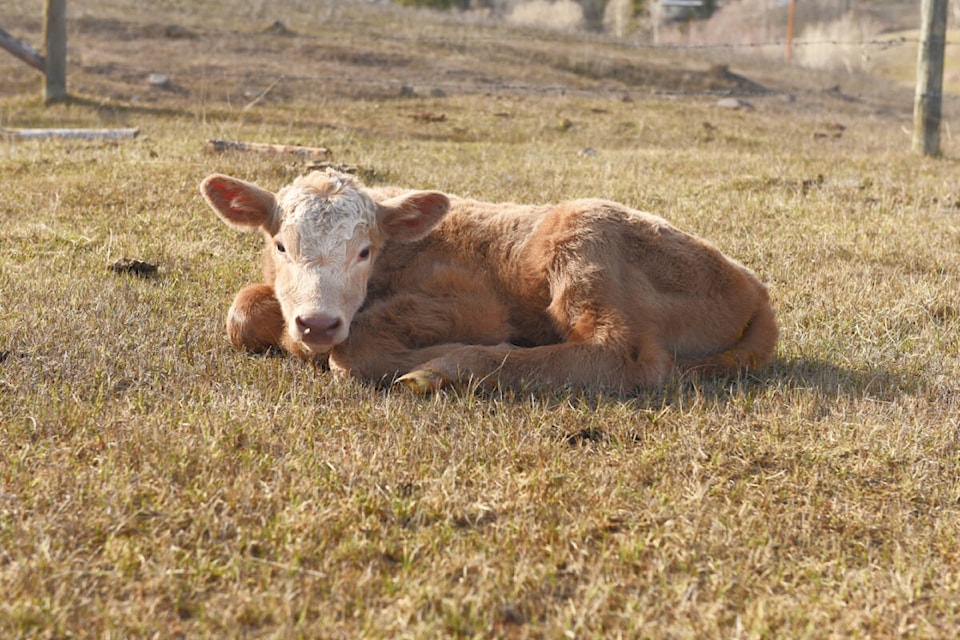Hard working, tough talking, and someone who admits to liking animals more than she does most people.
In some ways, June Harry is your typical ranch manager.
Not afraid to say what she thinks, diplomacy is not her strong suit, but in Cariboo country, many of us would say straight talk and honesty is a strength.
Yet in other ways, June Harry is most definitely not your typical ranch manager.
Being both First Nations and a woman, June Harry would likely stand out at a Cattleman’s Association meeting.
When I went out to meet her at the 150 Mile Ranch, we met up on the long driveway.
She ordered her dog Straight (named after George Straight) into the back of the side-by-side and told me to get in next to her so we could go and check some cows.
Stopping to open a gate, she drove across the field to where the cows and young calves were, keeping up a dialogue as she looked over the herd.
The majority of the conversation centered around the cows. It is, after all, calving season.
Which mother was aggressive, which one was ready to birth and needed a watchful eye.
In between feeding animals, checking on new calves and heifers nearing birth, helping with the milk cow her husband and daughter-in-law just purchased and being led around by her three-year-old granddaughter Eilidh, she told me about getting into ranching by association.
Her husband Larry Harry had cows and when he was going to get rid of them in 2002, she told him she’d take over.
This isn’t surprising for those who know June (full disclosure, June is my cousin). Her aunt Lesley Lloyd recalls a young June who had a way with animals.
“She was always smiling and game for anything, she would get on any horse,” said her aunt, describing the special bond her niece had with animals.
Lloyd recalled a bad-tempered pony we had as kids. But June had a special bond with the cantankerous beast, while the rest of us were scared to get on him.
“She loved that little pony … she could do a lot with him that nobody else could.”
From then until 2016, she was managing her husband’s herd or working for Lyle James at the Circle “S” ranch in the Stswecem’c Xgat’tem First Nation (SXFM) area, otherwise known as Dog Creek.
She loved living out at SXFN, but as the teenagers in her home got to the age where they would need to move away to finish high school, she was looking to move to town to continue to support them.
So in 2016, when Williams Lake First Nation (WLFN) took over the 150 Mile Ranch, which at the time was a small hobby ranch, she moved to town to take on the role of managing the ranch and properties.
Working towards a more sustainable operation, the ranch includes some rental properties she manages, a food garden, and it hosts the 4-H program for WLFN. This is of course on top of the herd of 46 cows with calves, some heifers, three bulls and some yearlings she’ll be selling this spring.
“We try to keep our cow numbers at how much hay we can grow,” she explained.
The herd is a work in progress, and when she came, she said the randomly purchased herd was “crazy” and she had to cull some and is still working to “settle” some of the others.
The irrigation system was not operational, and the first year, the ranch had to buy hay. But she got the irrigation running and continues to work through the challenges, with her goal being “for people to know how to grow and get food.”
She wants a future for the WLFN community free from dependency on government, whether that’s federal or First Nations.
Instead, she hopes to see more people learning how to grow and find their own food, which would include returning to more fishing, hunting and gathering.
She is concerned about the lack of connection many of today’s consumers have with where their food comes from, recalling a story of her grandson not wanting to be involved in the killing of animals. She told him if he wants to eat hamburgers, he should be glad to know the cattle had a good life and were loved.
This connection to the food and how it is produced is why she wanted to involve the youth, and pushed her daughter-in-law Julia Flinton, who grew up in 4-H, to start the 4-H program for WLFN. The program is now largely hosted at the ranch.
“I want to see resilience in the community,” she explained.
With the “big picture” in mind, she said if they end up still having meetings about the same problems after years of work, then something is not working.
She is also the field support for many of the community gardens now running at First Nations in the area. People go to her with questions about soil and different plants.
But she worries about new rules ranches have to try and navigate as regulation increases, and buyers controlling prices for beef while ranchers see costs continue to rise for supplies.
“I don’t know how the little guy will survive,” she reflects.
With the last teen in her house heading for graduation in two years, June said she will want to head back out to Dog Creek, to the place she still calls home.
Right now, she only gets to spend time there a couple of times a year with the various commitments of the ranch, but eventually, she will be going back again to where there are more animals and fewer people.
At the moment, she is happy to be right where she is, working with the younger generations on something for the future, being outside whatever the weather and being around the animals.
Leaving her daughter-in-law to stand watch over the calving heifer in the “hospital” pen, she heads up to the house for dinner, granddaughter in tow, where her 16-year-old niece is cooking dinner.

